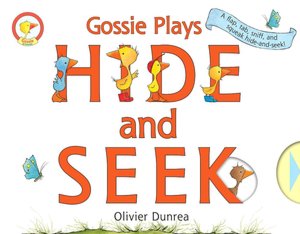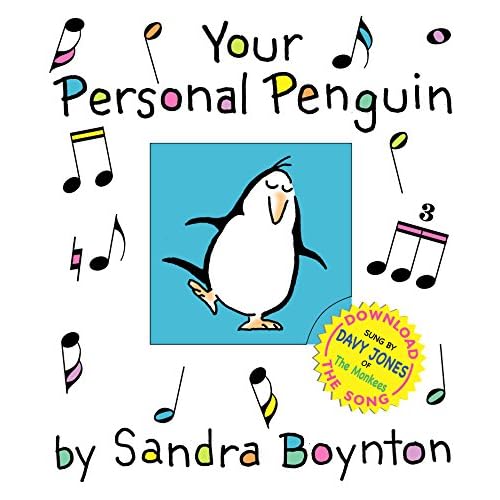Baby A's book display no longer fits all of her board books. Now, her books are rotated, just like her toys. Every Friday, I choose about twelve board books and two paper-page picture books for her book display, and the rest of the board books stay in her toy closet. (Paper-page picture books are kept on a bookshelf in the living room.) Based on the books we have and the developmental focus for Baby A, I created categories and I choose at least one book from each category each week. Books which Baby A shows strong interest in may get to stay on the shelf for more than a week. And obviously, books cross into several categories.
I currently have eight categories (in no particular order), and you can read the explanation of each if you're interested.
1. Counting/Colors: Some weeks we focus on practicing colors, and other weeks we practice counting to ten or other quantification skills. The books to serve this purpose are not necessarily counting nor color, but they are books that I know I can use to start conversations about these things. They're not always separate, either--Elmer's counting books have such vivid color blocks that we pause to talk about all of Elmer's colors, the blue birds, the purple fish, etc.
2. Vocabulary: Baby A has a few "dictionary" books, but other books are vocabulary-building with either a lot of pictures and details for elaboration, or with one word per page for a concentrated approach. My Little Word Book has a lot of pictures in categories like human body, farm animals, wild animals, toys, clothes, etc.
 3. Animals: Baby A has many animal books, as I'm sure most toddlers have. Sometimes, we have one book on zoo animals and one on farm animals for a week. Or, we have three books on dogs one week, and one book on desert animals the next week. If you have a lot of books about vehicles, flowers, teddy bears, or whatever--they could be rotated in variety or in themes.
3. Animals: Baby A has many animal books, as I'm sure most toddlers have. Sometimes, we have one book on zoo animals and one on farm animals for a week. Or, we have three books on dogs one week, and one book on desert animals the next week. If you have a lot of books about vehicles, flowers, teddy bears, or whatever--they could be rotated in variety or in themes. 4. Lift-the-Flap/Interactive: These books feel like they are full of treasures and surprises, and build fine motor skills. They can be enjoyed at any age, but it is probably most exciting to see a toddler figure out how to manipulate the book independently. Baby A's first interactive book was Pat the Bunny, and I loved to see her peek at herself in the mirror or lift the cloth to find Paul when she was about 9 months old. Baby A, currently at 20 months, is very interested in flap-lifting, pop-up-pulling, sniffing, rubbing, and wheel-turning her books. All of these features (except pop-up) are in Gossie and Friends: Gossie Plays Hide and Seek, which also has a simple board game complete with character pieces in the back cover.
4. Lift-the-Flap/Interactive: These books feel like they are full of treasures and surprises, and build fine motor skills. They can be enjoyed at any age, but it is probably most exciting to see a toddler figure out how to manipulate the book independently. Baby A's first interactive book was Pat the Bunny, and I loved to see her peek at herself in the mirror or lift the cloth to find Paul when she was about 9 months old. Baby A, currently at 20 months, is very interested in flap-lifting, pop-up-pulling, sniffing, rubbing, and wheel-turning her books. All of these features (except pop-up) are in Gossie and Friends: Gossie Plays Hide and Seek, which also has a simple board game complete with character pieces in the back cover.  5. Affection: I like to keep handy books which give excuses for extra kisses and hugs and verbal affections. Even the tiniest readers feel bonded to and soothed by the tone, pace and voice inflection of their reading parents and caregivers. For example, my voice is enthusiastic and sweet while I read Your Personal Penguin, and soft and reassuring while I read I Love You As Much.
5. Affection: I like to keep handy books which give excuses for extra kisses and hugs and verbal affections. Even the tiniest readers feel bonded to and soothed by the tone, pace and voice inflection of their reading parents and caregivers. For example, my voice is enthusiastic and sweet while I read Your Personal Penguin, and soft and reassuring while I read I Love You As Much.
6. Poetry/Lyrical/Rhyming: A silly rhyme or a play on words is good for a laugh and for sound cognition. Toddlers practice speech by repeating fun words and phrases, and older children may want to memorize and recite favorite poetry.
7. Season/Holiday: Books don't necessarily have to be kept in their season of the year, but I definitely put books about holidays or weather and seasons or upcoming activities (like an airplane book before an airport trip, or potty book before potty training) in heavy rotation when they are most appropriate.
If I had more wordless picture books, they would get their own category. Right now, Good Dog, Carl by Alexandra Day gets a lot of love.
As I choose books (pssst...contrary to the intensity of this list, it only takes me a minute) I also try to balance English-language and Finnish-language texts, as well as long-ish texts with shorter texts.
Books pictured:
Elmeri Ja Numerot by David McKee
My Little Word Book by Roger Priddy
I Howl, I Growl by Marcia Vaughn, illustrated by Polly Powell Your Personal Penguin by Sandra Boynton
Jamberry by Bruce Degen
Bear Snores On by Karma Wilson, illustrated by Jane Chapman
Kaapo Kanin Känkkäränkkä [The Big Bad Mood] by M. Christina Butler, illustrated by Frank Endersby




No comments:
Post a Comment
It makes my day to hear your insights, input, and friendly opinion!